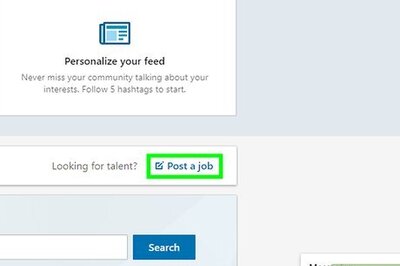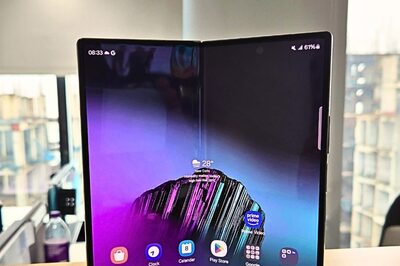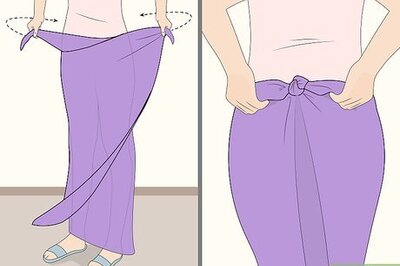
views
Uber Technologies Inc on Thursday reported its first profitable quarter on an adjusted basis since it launched more than a decade ago with its two most important segments, ride-hailing and restaurant delivery, both turning the corner.
But a massive drop in the value of its stake in Chinese ridehailing company Didi drove a $2.4 billion net loss, and Wall Street viewed Uber’s fourth-quarter forecast as disappointing. Shares fell 1.6%.
The California-based company reported adjusted earnings before interest, taxes, depreciation and amortization, a measure that excludes one-time costs, primarily stock-based compensation, of $8 million for the quarter ended Sept. 30. That compared to a loss on the same basis of $625 million a year ago.
Uber forecast an adjusted profit of $25 million to $75 million for the last quarter of 2021. Analysts on average expected $114 million, according to Refinitiv data.
Despite the adjusted profit, Uber’s earnings report came as a disappointment after smaller U.S. rival Lyft Inc on Tuesday reported its second consecutive quarterly adjusted profit at $67.3 million and said it expected adjusted EBITDA of between $70 million and $75 million in the fourth quarter.
Uber’s and Lyft’s operations have yet to become profitable on a net basis, and the companies decline to provide guidance of when that might happen.
Consumers were traveling in greater numbers in the third quarter and drivers had returned to its platform, Uber said, suggesting its driver incentive payments were helping.
The company’s growing net loss of $2.4 billion was driven primarily by drop in value of its holding in Chinese ride service Didi and stock-based compensation. Didi, which went public in June, saw its market capitalization drop by billions of dollars after China’s market regulator launched an anti-trust probe https://www.reuters.com/world/china/didi-us-debut-overshadowed-by-china-cybersecurity-probe-2021-07-05.
“There’s very little in Uber’s third-quarter report which can stop its shares tanking right now, particularly after it had to take a massive one-time charge on Didi,” said Haris Anwar, an analyst at Investing.com.
Uber’s total revenue grew 72% to $4.8 billion, above an average analyst estimate of $4.4 billion, according to IBES data from Refinitiv.
Revenue at its mobility unit, which includes its rides business, grew 62% to $2.2 billion from last year. Revenue was up 36% on a quarterly basis, and unit margins returned to pre-pandemic levels.
Uber Chief Executive Dara Khosrowshahi in a statement said this year’s Halloween weekend surpassed 2019 levels, suggesting Americans were eager to go out.
U.S. airport trips, among the most profitable routes in the industry, increased in recent weeks and were up 20% from the beginning of September, while business trips increased 60%, Uber said.
Uber Chief Financial Officer Nelson Chai said the company’s core restaurant delivery business was profitable for the first time on an adjusted EBITDA basis in the third quarter.
Uber’s monthly active driver and courier base in the United States has grown by nearly 640,000 since January, but the company did not provide data on how driver numbers compared to pre-pandemic levels.
Uber’s delivery unit, largely made up of the company’s Eats business, continued its success streak, but gross bookings were largely unchanged from the second quarter.
Delivery, which includes restaurant and store deliveries, overall reported an adjusted EBITDA loss of $12 million, bringing the unit close to breakeven.
Delivery emerged as Uber’s pandemic backbone. Steady delivery bookings signal the rebound in rides has not come at the expense of food delivery, with consumers sticking to the service even as the economy reopens.
Read all the Latest Tech News here



















Comments
0 comment